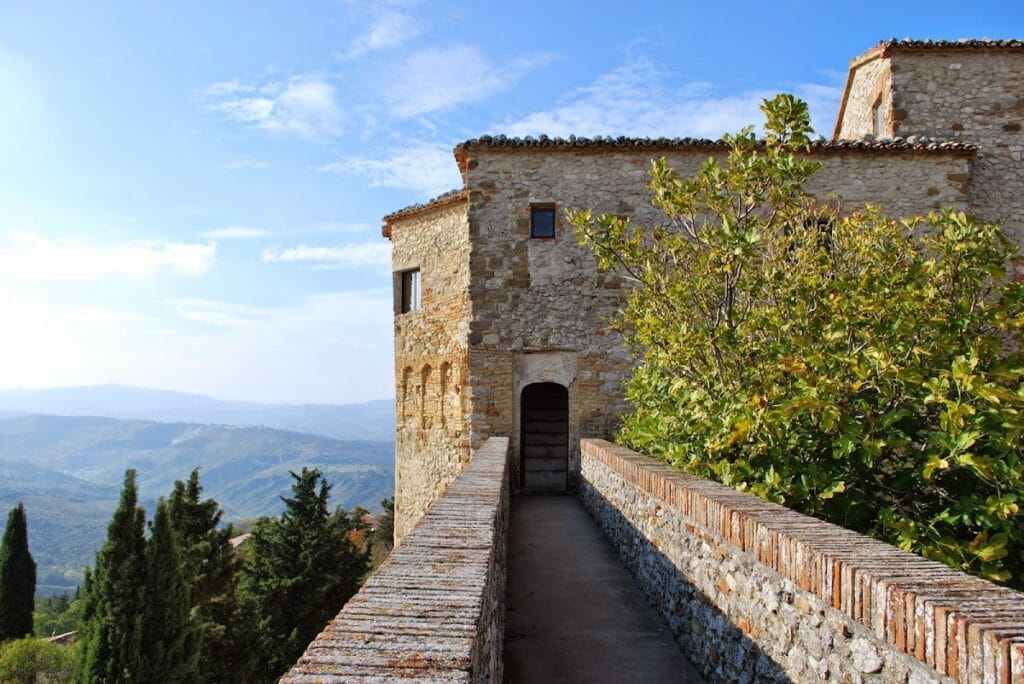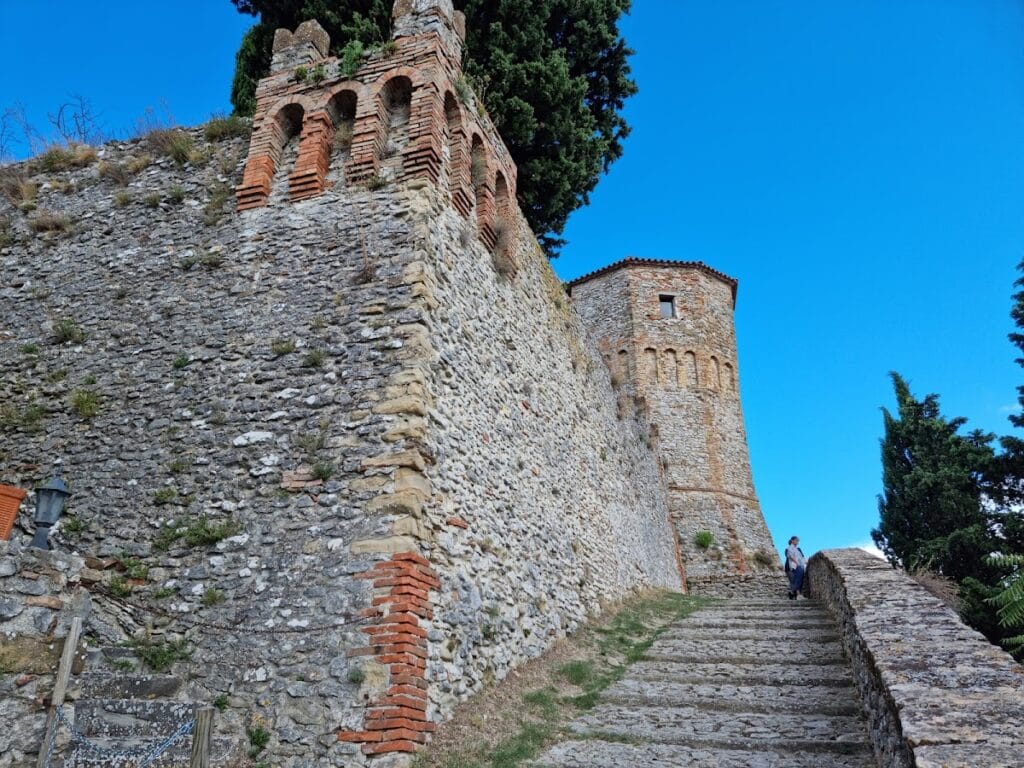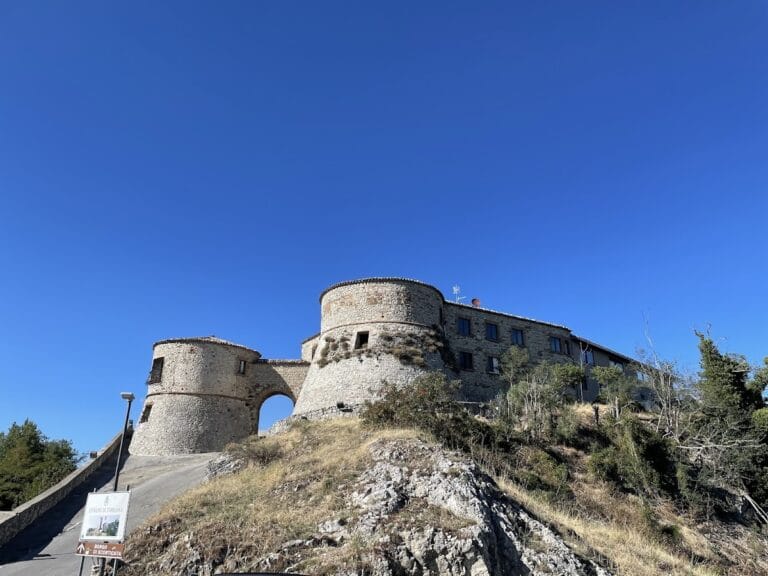Castello di Montebello: A Medieval Fortress in Italy
Visitor Information
Google Rating: 4.5
Popularity: Medium
Google Maps: View on Google Maps
Official Website: www.castellodimontebello.com
Country: Italy
Civilization: Medieval European
Remains: Military
History
The Castello di Montebello is a medieval fortress situated above the village of Montebello di Torriana in Italy. This stronghold was originally built and occupied during the Middle Ages and reflects the military and noble presence typical of that era in the region.
The earliest recorded mention of the castle dates back to September 24, 1186, found in a notarized sale contract. At that time, Ugolinuccio di Maltalone sold the fortress to Giovanni Malatesta, a member of the Malatesta family, which later became a dominant power in the area. Over the next three centuries, the Malatesta family significantly fortified the castle, expanding its walls, erecting new towers, and adding defensive features such as battlements and an armory to strengthen its defenses against attacks.
In the mid-15th century, the ownership of the castle shifted following military conflict. After Sigismondo Malatesta and his son Roberto were defeated—Sigismondo had been responsible for pillaging the area—Giovanni Francesco Guidi di Bagno was awarded the title of Count by Pope Pius II on June 1, 1464. This papal recognition was granted as a reward for Guidi di Bagno’s role in the campaign against Sigismondo Malatesta. From this time onward, the Guidi di Bagno family maintained control over the fortress and surrounding lands.
The Guidi di Bagno family continued to hold the castle until the end of the feudal era in 1797, when Napoleon Bonaparte’s reforms abolished feudal privileges in Italy. Starting in 1549, they had been raised to the rank of marquises and have preserved the castle through the centuries, keeping it as a noble residence despite various challenges. Notably, the castle sustained damage during World War II but remained under the family’s care. From 1989, major restoration efforts were undertaken to repair and conserve the structure.
Among the many stories connected to Castello di Montebello is the enduring legend of Azzurrina, said to be the albino daughter of Ugolinuccio di Maltalone and his wife Costanza. According to tradition, she mysteriously vanished within the castle on June 21, 1375, the day of the summer solstice. This tale has long been part of the castle’s cultural memory, associating the site with a haunting figure known regionally as Guendalina Malatesta.
Remains
Perched on a hill 436 meters above sea level, the Castello di Montebello commands a view over the village below and the wide Valmarecchia valley. The fortress presents a compact medieval layout focused on defense and stronghold functionality. Its outer walls, thick and robust, enclose the main courtyard and residential areas.
A central feature of the castle is its massive keep, or mastio, a tall tower designed as the last point of refuge and a lookout during times of siege. Nearby are the feudal prisons, which were used to detain prisoners during the castle’s active military and judicial use. Secret passages and defensive traps, intended to confuse and deter attackers, remain partially accessible, illustrating past security measures. One remarkable artifact is a heavily secured safe that French troops attempted but failed to remove during their occupation at the close of the 18th century.
Outside the main fortress complex lies the armory, a rectangular building originally erected during the medieval period. It underwent substantial alterations in the 18th century, adapting to changing needs while preserving its military function. The armory’s remodeling reflects the castle’s ongoing strategic importance well into the modern era.
Access to the castle is gained through the honor gate, which features a stone-carved coat of arms dating from the 16th century. This heraldic emblem combines the families of Guidi di Bagno and Colonna di Zagarolo, celebrating a marriage alliance that linked these two noble houses. This decorative gate marks both the entrance and a symbol of lineage continuity.
Within the castle, a Renaissance wing constructed by the Guidi di Bagno family houses several collections that illuminate its residential use. Here, visitors find jewelry, mirrors, and ancestral portraits, as well as a large painted family tree that charts the lineage. Chests and wedding trunks add to the display of noble domestic life and heirlooms preserved through generations.
The Salone delle Feste, or Festive Hall, retains original furnishings that reflect the castle’s role as a setting for noble gatherings and celebrations. Adjacent to it, the family chapel contains a notable painting depicting Carlo Guidi, the family saint, reinforcing the Guidi di Bagno’s religious devotion and the castle’s spiritual functions.
One of the castle’s most intriguing features is the corridor known as the “Azzurrina corridor,” which is marked as the legendary place where the young Guendalina Malatesta disappeared in 1375. This space remains a focal point for the castle’s most famous ghost story and connects the site’s tangible remains with its intangible cultural heritage.
Together, these elements present a well-preserved example of a medieval fortress continually adapted and inhabited by noble families, embodying layers of military, residential, and symbolic importance across centuries.







